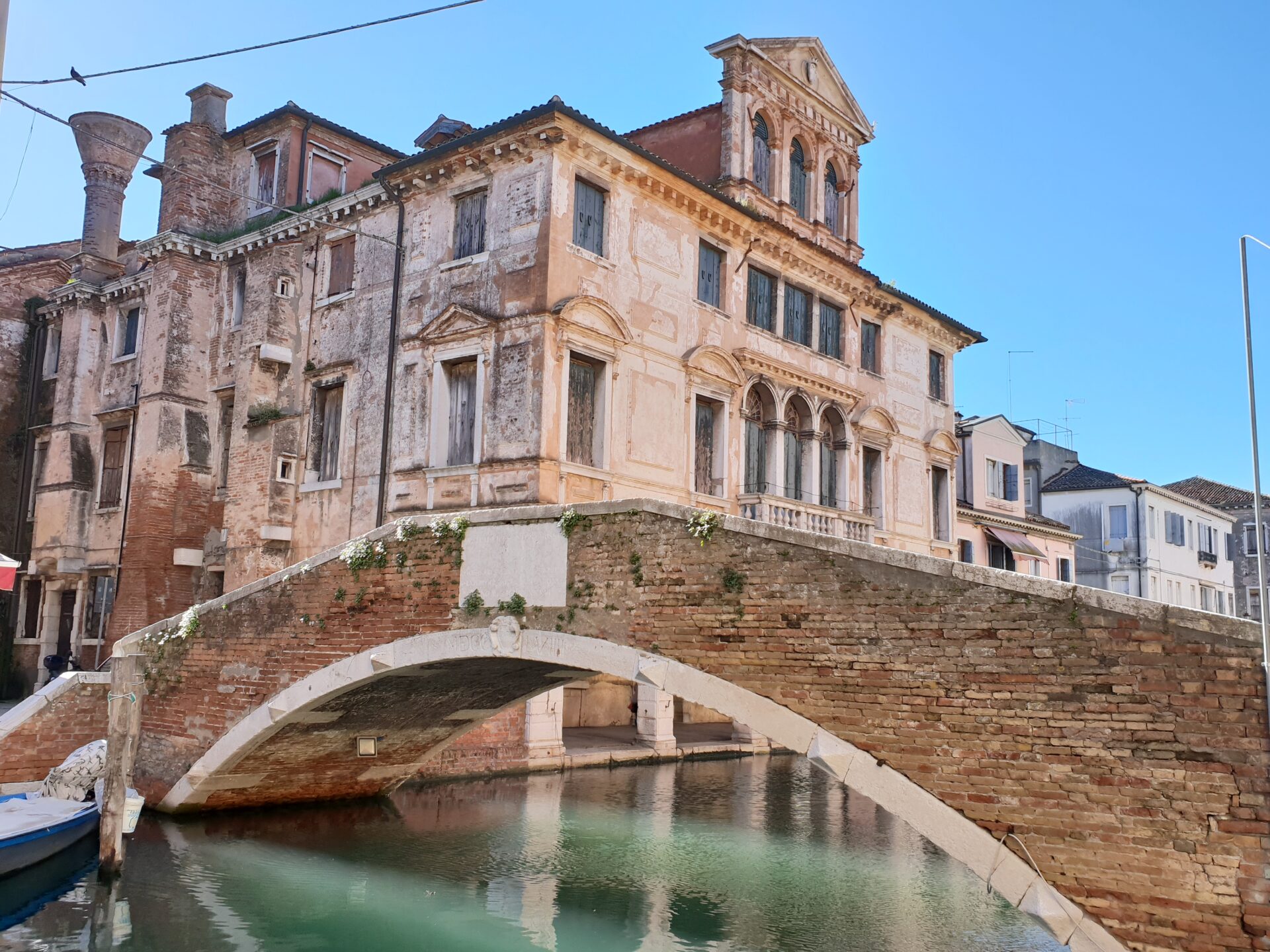
WHAT TO SEE IN CHIOGGIA AND SOTTOMARINA LIDO
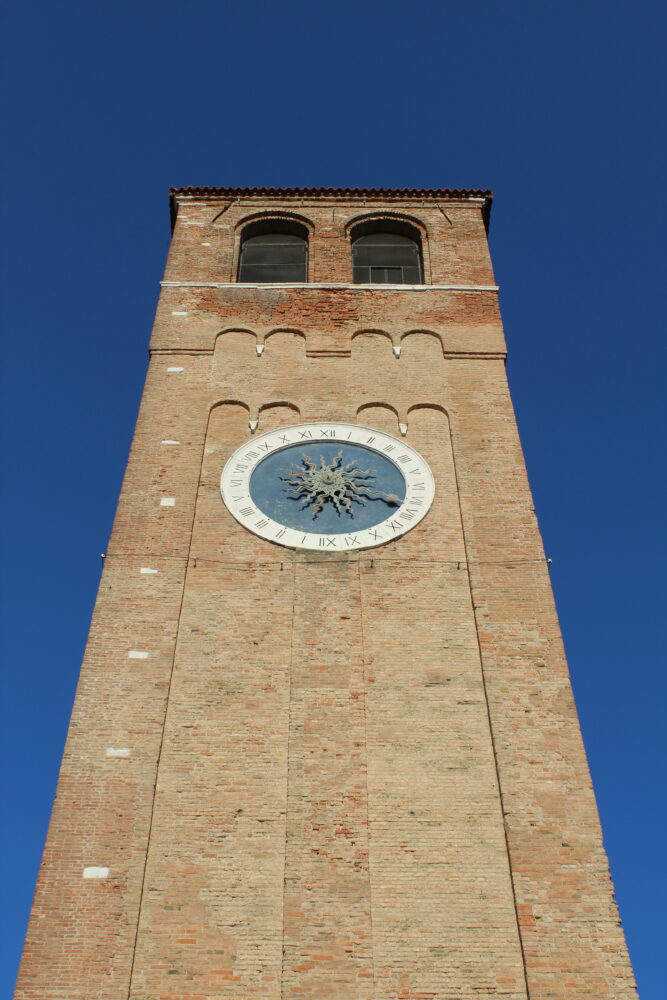
The Tower of Sant’Andrea
Next to the Church of Sant’Andrea in Chioggia, there is the Tower of Sant’Andrea; initially the medieval tower was a lighthouse of sighting and defense tower. It is thought that the materials used for the construction confirm its construction prior to that of the adjacent church. Thanks to countless and meticulous research we can say with absolute certainty that it is the oldest tower clock in the world still working put back into operation after the war of Chioggia in February 1385 and built at least a few decades earlier. Inside the Tower there is the museum of the history of Clodiense, divided into 7 floors, on the fifth floor is kept the important mechanical heritage of the clock. On the seventh floor, however, you can get there through a trapdoor, where there is the belfry with the sacred bronzes, from where you can admire, from another point of view, all the beauty of the city of Chioggia and also glimpse the Bell Tower of St. Mark from which at the beginning of 1600 Galileo Galilei, who wanted to sell his Canon to the Serenissima Republic declared and made the bystanders observe Chiozza.

The sand of the beach
The sand of the beach of Sottomarina Lido is very fine and if you look closely you can see small grains of quartz and minerals. In fact, thanks to the augite, quartz silicates and micaceous elements and the large amount of iodine present in the air, the beach of Sottomarina Lido is known and appreciated for its therapeutic qualities. Not only that, but they turn out to be a good natural tanner as the sun reflected and attracted by these small minerals facilitates the melanin process or tanning. Also famous are the “sunbathing” (heliotherapy treatments) that help the body to benefit with the sun’s rays: the sunlight must be correctly dosed giving preference to the hours of early morning and late afternoon, excluding the hours of maximum solar intensity. The beach, more than 5 km long, starts from the southern dam of Chioggia and reaches the mouth of the brenta river, and then continues in the area called Isolaverde. Compared to other nearby resorts, the beach is characterized and is also characterized by its width that in some places reaches almost 300 meters. It offers a spectacular view especially at the first light of dawn, walking on the shoreline that is gradually descending towards the open sea. Suitable for everyone, families and children so much so that it has received in recent years the blue flag (international recognition assigned to seaside resorts that comply with criteria relating to the sustainable management of the territory) and the green flag (issued by Italian pediatricians who indicate the beaches suitable for children, a ‘guide’ for parents looking for holidays with everything you need for small bathers).
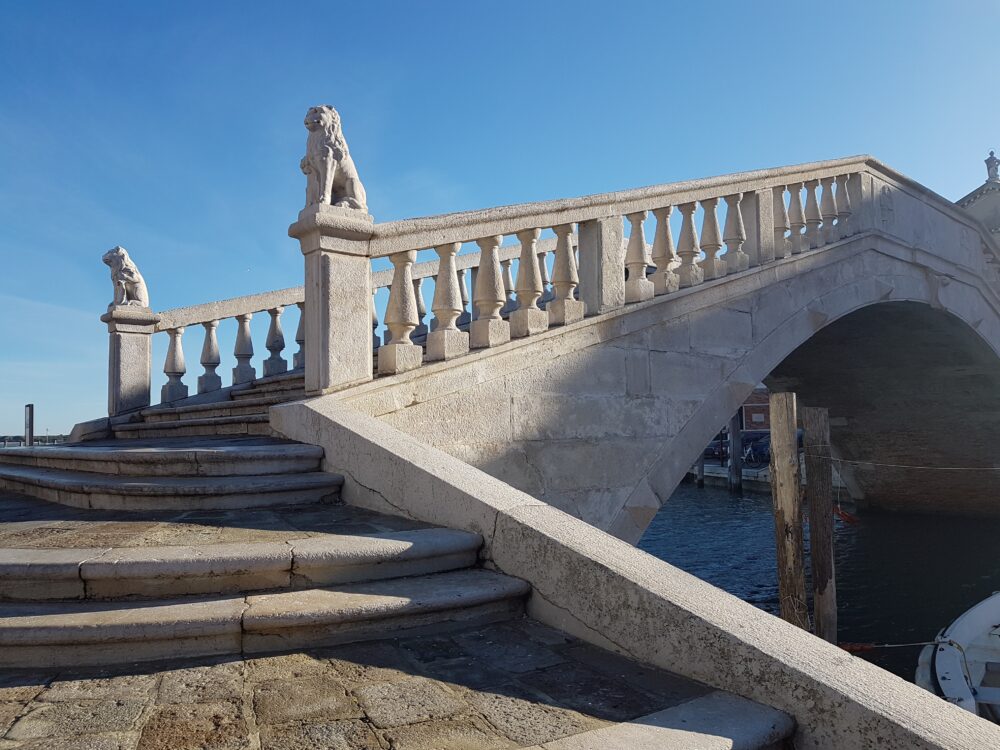
The Vigo Bridge
The Vigo Bridge is one of the most important symbols of Chioggia, because of its position overlooking the Vigo basin and represents the business card of the city for those arriving there from the lagoon or the sea. A tourist attraction of great importance, the bridge tells a centuries-old past of the lagoon city. Called the balcony of the city is the most artistic of the nine bridges that ride the Canal Vena, the equivalent of the Rialto Bridge in Venice. It is not surprising that the Vigo Bridge is a symbol for the people of Chioggia and, probably, one of the most photographed monuments. The arch is in masonry but all the cladding of the bridge is in Istrian stone. Of the same material is the balustrade formed by columns and bas-reliefs that decorates it in both facades. Among the four bas-reliefs it should be remembered the southern one depicting the Annunciation and the one depicting the Patron Saints. The steps and handrails are also naturally made of Istrian stone, while the floor is made of trachyte masegni.

The fish market of Chioggia
The fish market of Chioggia is located behind the Palazzo Granaio, one of the oldest buildings in the city, with the function, at the time, of protecting grain supplies in case of high water and humidity. It rested on 64 columns in Istrian stone; at the end of the 800 the columns were cemented and the closed space was used as a warehouse for fish.Recognizable, by its red awnings, inside there are two rows of granite counters covered with stainless steel. There is a great choice of fresh fish with prices within everyone’s reach. It is accessed through a large portal dedicated to Prisca, a work executed between 1939 and 1940 by the Paduan sculptor Amleto Sartori: it is a collection of allegorical scenes whose protagonist is Prisca, a little girl who died at an early age, to whose memory her parents wanted to dedicate the monument. Originally the work was intended for a school. In the lower part of the lintel is engraved the following legend: “To Chioggia – proletarian and seafaring – an adopted son dedicates”. A market where both the retail sale of fish takes place but it is a place where tourists or simply curious can see with their own eyes the folklore of the city, listen to the dialogues in Chioggia dialect between fishermen, hear the quality of their fish decanted or advise them with recipes and culinary anecdotes. Open every day, except Mondays, from 7 to 13.00
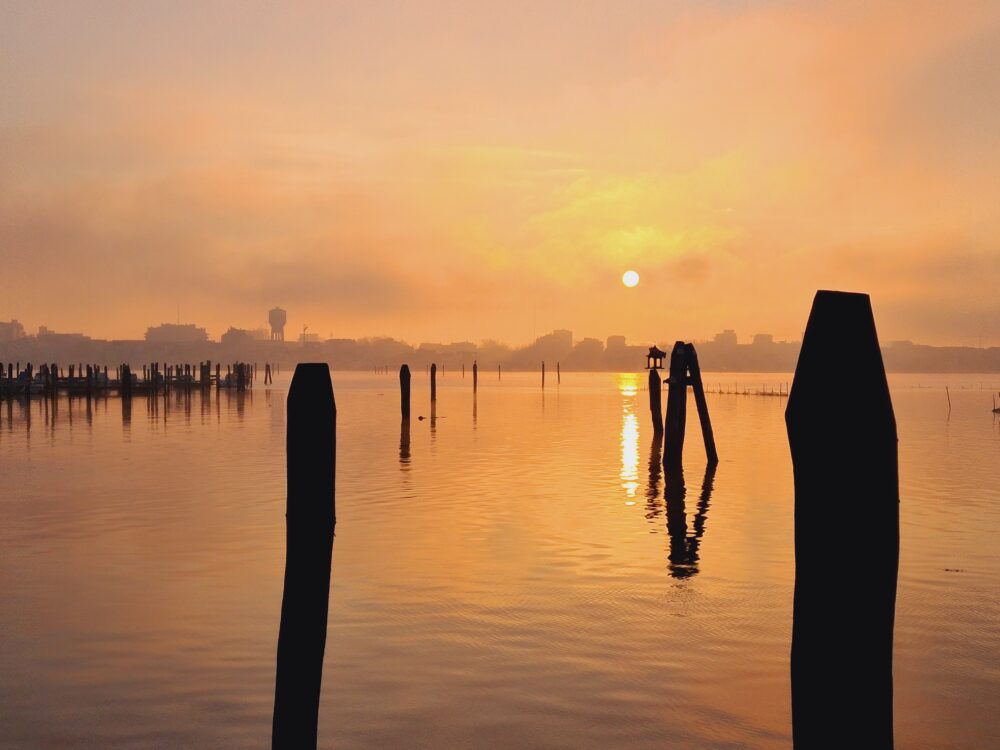
Laguna del Lusenzo
The “ring” of the Laguna del Lusenzo, is a cycle and pedestrian path built not many years ago, almost 5 km long that runs along the internal lagoon from Chioggia to Sottomarina Lido. A protected and accessible path from multiple points where you can run, walk and ride a bike becomes safer. The landscape that can be admired along the entire shore is something magical and spectacular: the colors of dawn that reflect in the water, the reverberation of the shimmer of the sun that is present throughout the day in the lagoon, the sound of water that breaks and relaxes the mind and body and the scent of salt has beneficial effects on the respiratory system. An ideal route also for those who practice sports, such as running, it offers a healthy and safe space, suitable for those who want to rediscover the territory through a sustainable path. Equipped with benches to rest, chat or simply to contemplate and admire the view and some drinking water fountains to refresh.

The famous Thursday market
The weekly Thursday market takes place in Chioggia, along the Corso del Popolo and in Chioggia dialect is called: “el zioba”. Also known by tourists and nearby cities is one of the most popular weekly markets great from all over the Veneto. The market starts in the south in Campo Marconi near the famous Porta Garibaldi and crosses the whole city longitudinally to Piazzetta Vigo. The market takes place from 08:00 to 13:00 and the whole road is closed to traffic becoming a pedestrian area. Unmissable appointment for chioggiotti with quality goods and at a good price.
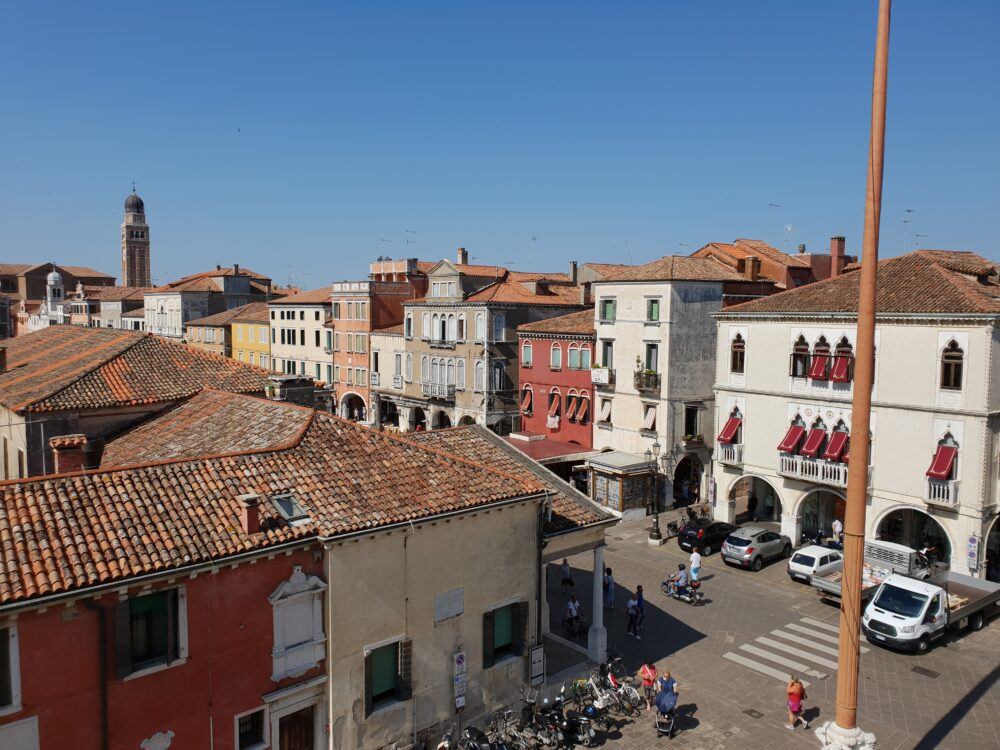
Course of the People Chioggia
The Corso del Popolo, formerly Corso Vittorio Emanuele, is the main square/street of the city, which goes from Porta Garibaldi to Piazza Vigo (where the vaporetti leave for Pellestrina and Venice), about 800 meters long is the heart of the city. Overlooking the course, there are palaces with eighteenth-century features, with porticoed buildings on the west side. Meeting place where people stroll, sit in the many bars and chat. Crossed perpendicularly by the numerous streets is the fulcrum of the city, where traditions are jealously guarded and where the scent of freshly baked bread envelops you. At the end of the Corso, in Piazzetta Vigo there is the embarkation of the Vaporetto to Pellestrina and the Lido of Venice.

Church of San Domenico
The first news are found since 1287, the year in which it was decided to found, in this island already owned by the Benedictines, a Dominican monastery. This small island is located north-east of the city and from here started a long bridge that connected Chioggia to the current Sottomarina. Inside the church, in the niche of the main altar, there is the Christ of San Domenico, 4.87 meters high, 3.50 meters wide and weighing 180 kg. The work is one of the most beautiful examples of Gothic Crucifix “Patients” or Painful, for the strong charge of pathos that transmits both from the face with painful and at the same time sweet features, half-closed and tearful eyes. The veneration of christ of San Domenico is very much felt by the fishermen of Chioggia, who painted miniatures of it even in their boats.
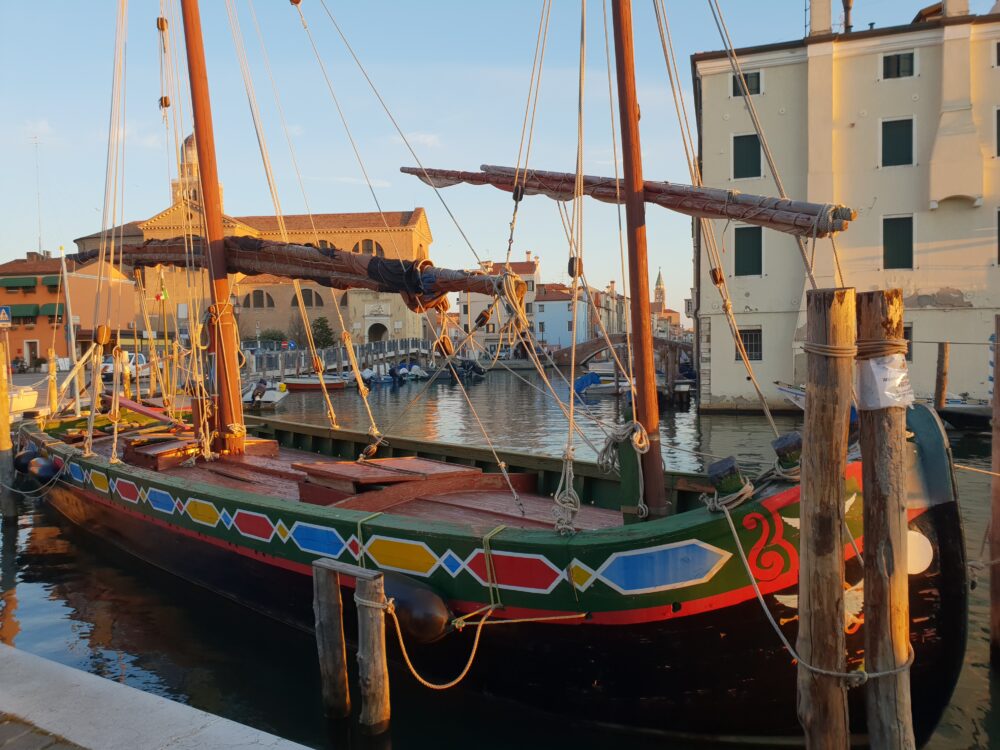
The Bragozzo
It can be considered the typical fishing boat of Chioggia. The main features are: the round bow, the squat stern and the flat bottom. It was colored with pitch and decorated with religious images or magical symbols, to ask for protection from the frequent dangers at sea. The sails were brightly colored red, yellow and painted with drawings and emblems, symbols of the family of the owner of the boat. It is equipped with two masts equipped with a sail on the third. The name “vela al terzo” derives from the way in which the halyard is given turn with respect to the forward end of the antennae, precisely a third of the total length of the upper side of the sail.



